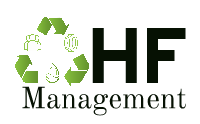What are the Clean Air Act norms for perilous air toxins?
As indicated by the Clean Air Act, the Environmental Protection Agency (EPA) should set up emanation norms in light of the contamination controls at the best-performing sources. These are the National Emission Standards for Hazardous Air Pollutants (HAP), or NESHAP.
EPA gives these principles and prerequisites in light of an office’s area, action-related innovation, and HAPs. In particular, to decide the best-performing sources, EPA takes a gander at the emanations decreases at every comparative office and midpoints the outflows at the best 12%. How do treats mean precisely? Basically, this is what occurs:
EPA groups together all offices that perform comparative exercises (e.g., all offices that work machine X).
Then the agency looks at how much poisons the offices would radiate without controls set up and contrast them with what they really transmit subsequent to carrying out controls. This is the “emanation impediment” at those offices.
In conclusion, it takes a gander at the 12% of offices that had the most noteworthy emanation limit and midpoints those to get the gauge for the computation of the norm.
These all met up in 2 series of guidelines: MACT and GACT.
MACT
The essential norms are the Maximum Achievable Control Technology (MACT) guidelines, which . set the sorts of gear or discharges control exercises at offices to diminish HAPs however much as could reasonably be expected. Under the Clean Air Act, EPA can additionally recognize them as per bigger “significant sources” and “region sources,” in light of your offices’ capacity to discharge toxins – meaning the greatest potential sum they could produce:
Significant source: Facilities that transmit (or can possibly radiate) something like 10 tons each extended period of anyone HAP – or if nothing else 25 tons each time of any mix of HAP. (In principle, EPA can set a few more modest amounts as per the HAP’s intensity, diligence, bioaccumulative properties, or different attributes – yet it still can’t seem to do as such.)
Region source: All other fixed offices that produce perilous air toxins and don’t meet the above measures.
GACT
Notwithstanding, for a portion of those area sources, there are additionally elective, less rigid guidelines at play. These Generally Available Control Technologies (GACT) principles force least administration rehearses intended to decrease discharges of HAPs, like physical or functional restrictions (e.g., like diminished hours).
When to follow up on MACT versus GACT?
The “when” descends to your “what”: the subtleties of your office. Take for instance the MACT standard for Wool Fiberglass Manufacturing offices. This standard applies just to fleece fiberglass producing at significant sources. Region sources with similar kinds of offices are likely to a less severe GACT standard (40 CFR 63 Subpart NN).
The MACT standard requires offices built after 2011 to introduce and work control frameworks to restrict chromium outflows to .25 lbs for every thousand tons of glass for glass-terminated glass-liquefying heaters – or 0.33 lb particulate matter (PM) per ton of glass pulled. These offices likewise face extra emanation restricts and related control prerequisites for formaldehyde, methanol, and additionally phenol in view of the kinds of assembling lines at the site. These mirror the outflows at the best-performing sources occupied with fleece fiberglass-producing exercises. (Recall those 12%?)
In the interim, the option GACT standard for region sources in this industry has a substantially more restricted concentration. This requires just that gas-terminated glass-liquefying heaters be controlled or worked to release something like 0.25 lbs of chromium per thousand tons of glass pulled.
It’s basic to find out about MACT, GACT, and regardless of whether they apply – if not exclusively to keep your business lined up with the norms, to likewise stay up with the latest with any new turns of events. A valid example: interestingly since the rundown was made (in 1990), EPA has added bromopropane as a HAP. At the hour of composing this article, no NESHAPs for bromopropane sources have been distributed. Yet, they’re coming.
How to realize which Clean Air Act standard applies to your offices?
As may be obvious, regardless of whether your office is a significant or regional source altogether impacts how severe (and how convoluted) your commitments with the Clean Air Act are. However, deciding your materialness can be its very own confounded course.
While each NESHAP has its own prerequisites in regards to the relevance, the spot to begin is knowing 1) regardless of whether your office falls inside a source class canvassed by a NESHAP in your industry and 2) whether it produces to the point of being a significant source.
Know your NESHAP
NESHAP are coordinated by source classes, which depict the offices’ kind of cycles or hardware, like the utilization of specific boilers and warmers, or assembling of fleece fiberglass referenced before. Presently, in excess of 120 current NESHAPs for source classifications are situated in Title 40, Part 63 of the U.S. Code of Federal Regulations. Every one of these principles incorporates a part that depicts what sorts of offices should conform to the guidelines, alongside applicable definitions.
Survey your expected outflows
In the wake of deciding if your office is a source classification possibly impacted by a NESHAP, you should then sort out where it falls inside the significant versus region source breakdown. The response exists in your office’s capability to discharge. This depends on its cycles, gear, contamination control, and tasks.
Remember that it won’t be to the point of having controls set up to be viewed as an area source. Any current cutoff points on your office’s discharges will possibly lessen its capability to transmit on the off chance that they are lawfully required or enforceable. That implies control gear, limitations on functional hours, or the sort of material utilized or consumed are not thought about naturally.
In the event that you’re a significant source only changing/altering hardware or executing functional limitations, you’ll stay a significant source. To have region source status utilizing outflow controls, these controls should be lawfully required, for example, in your office license, a material regulation,or an assent arrangement.











